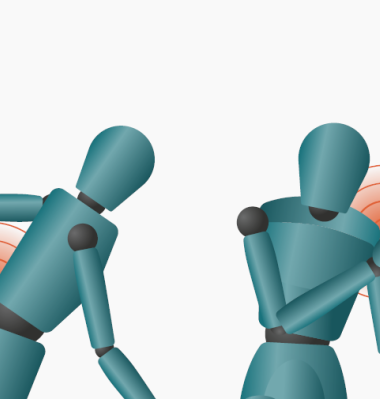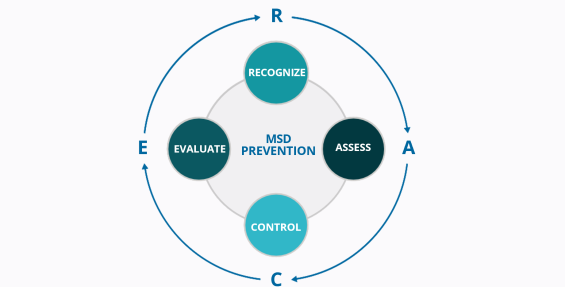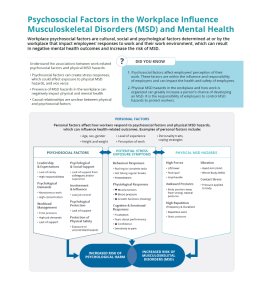MSD Prevention Guideline for Ontario
About Musculoskeletal Disorder (MSD) Prevention

You may be a worker looking for information on low back pain or carpal tunnel syndrome or an organization looking to prevent musculoskeletal disorders.
We have created ways for different groups and people to get more quickly to content that is most useful to them.
Every organization is different. To cater to the range of knowledge and resources in health and safety and ergonomics, we have created three parallel collections of resources for prevention of musculoskeletal disorders (MSD), Quick Start, Basic and Comprehensive Guidelines.

Understanding MSD
Musculoskeletal Disorders (or MSD) is an umbrella term for a number of injuries and disorders of the soft tissues of the body, including muscles, ligaments, tendons, and nerves. Many body areas can be affected. The lower back is the most commonly affected, followed by the shoulders, neck, elbow, hands, and wrists. Other terms with the same meaning as MSD include:
- Repetitive Strain Injury (RSI)
- Cumulative Trauma Disorder (CTD)
- Musculoskeletal Injury (MSK or MSI), and/or
- Occupational Overuse Syndrome (OOS)
Discover

MSD Hazards in the Workplace
We all suffer occasional pain and discomfort, but work shouldn't hurt. There is strong and consistent evidence that physical factors in the workplace and how work is organized can greatly increase a person's chance of developing an MSD. Work can also aggravate an existing injury and hinder the return to work process.

Recognize-Assess-Control-Evaluate (RACE)
The RACE process involves MSD hazard identification, risk assessment methods and other approaches to prevent MSD. The RACE process is referenced in all versions of MSD Prevention Guidelines.

Case Studies and Stories
Share your success stories with us! With worker's health & safety in mind, let's get together and share successful interventions that can benefit everyone. Whether you are a part of a company, a professional in the field, or a student completing a project or placement, we are looking for case studies to showcase.

Ontario Ergonomics Intervention Cost-Benefit Calculator
Need a resource to help estimate the return on investment (ROI) of proposed solutions to improve ergonomics and prevent MSD in the workplace? Try our new Ontario-based ergonomics calculator.
Highlighted Resources

Want to search the resource library?
Find all the available resources on the MSD prevention website, including posters, videos, and links to relevant websites.





